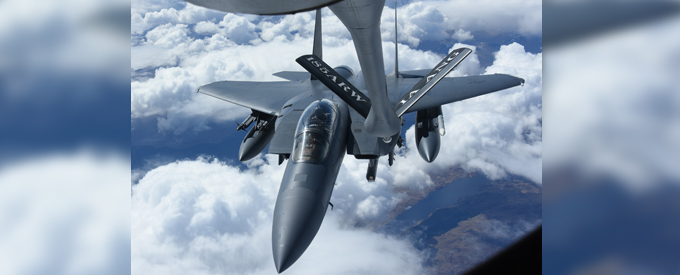2021-07-07
UK Royal Navy Uses AI for First Time in Sea Drill
The UK Royal Navy recently used Artificial Intelligence (AI) for the first time at sea as part of Exercise Formidable Shield, which took place off the coast of Scotland. The Operational Experiment (OpEx) on the Type 45 Destroyer (HMS Dragon) and Type 23 Frigate (HMS Lancaster), used the AI applications, Startle and Sycoiea, which were tested against a supersonic missile threat.
Formidable Shield tests the ability of NATO warships to detect, track and defeat incoming missiles, from sea-skimming weapons travelling at twice the speed of sound just above the waterline, to ballistic missiles.
As part of the Above Water Systems programme, led by Defence Science and Technology Laboratory (DSTL) scientists, the AI improves the early detection of lethal threat, accelerates engagement timelines and provides Royal Navy Commanders with a rapid hazard assessment to select the optimum weapon or measure to counter and destroy the target.
Scottish Secretary Alister Jack stated: “It’s vital that our brave and highly skilled Armed Forces stay ahead of the game for the security of the United Kingdom and our allies. The Royal Navy’s use of AI for the first time at sea is an important development in ensuring readiness to tackle threats we may face. I’m proud to see that two Scottish built Royal Navy vessels were at the heart of this exercise in the waters off the Hebrides.”
Close Partnership
DSTL worked closely with industry partners Roke (Startle App), CGI (Sycoiea App) and BAE Systems to ensure the new AI-based applications worked alongside existing radar and combat management systems.
The Startle AI system is designed to help ease the load on sailors monitoring the ‘Air Picture’ in the Operations Room, providing live recommendations and alerts.
The Sycoiea system builds upon this with Threat Evaluation and Weapon assignment identifying the nearest threat and how best to deal with it.
DSTL’s Programme Manager, Alasdair Gilchrist MBE explained: “DSTL has invested heavily in the systems that are installed at the moment, but it’s imperative that we continue to invest to make sure that the Royal Navy remains relevant now and in the future. Being able to bring AI onto the ships is a massive achievement, and while we can prove the AI works in the labs, actually getting Navy personnel hands on is brilliant.”
HMS Lancaster and HMS Dragon trialled the use of AI as part of a glimpse into the future of air defence at sea.
HMS Lancaster’s Weapon Engineer Officer, Lieutenant Commander Adam Leveridge outlined: “Observing Startle and Sycoiea augment the human warfighter in real time against a live supersonic missile threat was truly impressive – a glimpse into our highly-autonomous future.”
In the words of NATO Deputy Spokesperson Piers Cazalet: “Formidable Shield shows how Allies are working together to defend NATO forces and populations from the very real threat of missiles. In conflicts around the world, cruise and ballistic missiles are often the weapon of choice, both for state and non-state actors. So at a time when we see missile arsenals growing and becoming more complex, it is important that Allies continue to adapt and exercise our defences.”
Part of the exercise saw ships detect and track a missile flying at more than 20,000km/h. Ships also defended against an array of anti-ship and other sub and supersonic missiles using NATO procedures.
This year U.S. Navy Patrol Squadron FOUR (VP-4) successfully conducted a coordinated missile launch with VP-40 using two Air to Surface Missile (AGM-84D) Harpoons against a target barge off the coast of Norway during exercise At-Sea Demo/Formidable Shield (ASD/FS), on May 31. This marked the first use of Harpoon missiles by P-8A Poseidons in the European theatre.
Throughout the exercise, NATO forces conducted live engagements with Driven Ammunition Reduced Time of flight (DART) munitions, Standard Missile-2, Evolved Sea Sparrow Missiles (ESSM), Aster 15, and Aster 30 missiles against various targets, including subsonic Banshee, Mirach, and Firejet targets and ground-launched supersonic drone (GQM-163A) targets. Ballistic missile defence tests with Standard Missile-3 launches were also conducted.
Held every two years, Formidable Shield ran until June 2 and was led by Naval Striking and Support Forces NATO on behalf of the U.S. Sixth Fleet. The exercise involved around 3,300 personnel from Belgium, Denmark, France, Germany, Italy, the Netherlands, Norway, Spain, the United Kingdom, and the United States.


No Comments